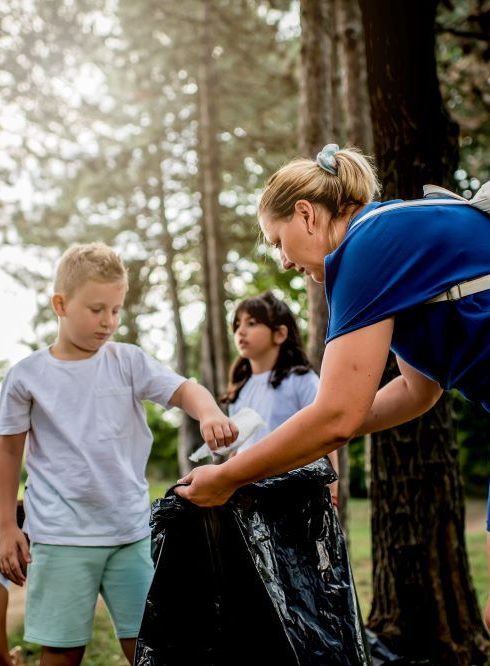Shorelines and the vegetation found there have a key role in keeping pollution out of water, regulating flooding and preventing erosion. Organize a shoreline or schoolyard cleanup to remove litter from these important areas!

Grade level: K-6
Learning Objective:
– Recognize how shoreline waste impacts animals and
vegetation
– Identify actions that can be taken to protect shorelines
In this activity, students will:
– Learn more about shoreline litter and how to be responsible around water
– Take action through a shoreline or schoolyard cleanup
– Reflect on the results of the clean up and share with others
Materials:
- Shoreline & Schoolyard Saver Toolkit
- Internet access and projector
- Gear and materials for cleaning up (i.e., gloves, bags for garbage and recycling, hand sanitizer, etc.).
Canada and the US are full of shorelines, be it oceans, the Great Lakes, rivers, and so many more bodies of water. Shorelines are teeming with life, and a healthy shoreline means healthy wildlife, healthy vegetation and healthy water. Unfortunately, shorelines can collect litter which has a negative impact on these ecosystems. More than 80% of shoreline litter starts out on land. That’s because garbage gets transported by wind and water and finds its way into our lakes and oceans. We can help keep our shorelines healthy by cleaning up around us.
Stage 1: Investigate & Create
- Take Earth Rangers’ Are you a Shoreline Saver? quiz.
- Discuss the results, and brainstorm some of the problems connected with shoreline waste, such as:
How waste impacts animals:
• Animals might get caught in things like old fishing lines and nets, six pack rings, rope and plastic bags
• Animals might think it’s food, and if they swallow it, it can hurt them (such as fishing hooks), or takes away room for food in their stomachs while making them feel full
The loss of shoreline vegetation:
• More pollution in the water (Plants help filter and remove toxins from water)
• Higher risk of erosion (Plants help prevent erosion)
• Higher risk of flooding (Vegetation slows down water)
• Lack of food for wildlife
Talk about how the waste that ends up in the water can come from other places such as parks, sidewalks and schoolyards.
- Organize a shoreline or school yard cleanup! Use the project planning outline from the toolkit to plan your clean up.
- Spread the word. You can find some sample announcements and posters in the toolkit.
Stage 2: Take Action
- Distribute gear and materials:
• Gloves
• Bags for garbage and recycling
• Hand sanitizer
• Garbage grabbers, like tongs
• First Aid Kit
• Litter tracking sheet from the toolkit and clipboard
• Pen or pencil
Review safety rules with students:
• Wear proper closed-toe footwear
• Depending on the weather, wear sunscreen and bug spray
• If near water, keep your eyes on the water and stay at a safe distance. Waves and currents are stronger than they appear
• If you find a sharp item, have a grown-up use their garbage-picker to properly dispose of it
• Stay with a buddy and make sure an adult is always close-by and ready to help at any time
- Take ‘before’ pictures of the area you will be cleaning.
- Start the cleanup! Have students, in pairs or small groups, keep track of the types of litter they find using the tracking sheet from the toolkit.
- When you are finished:
• Take ‘after’ pictures
• Thank everyone for their hard work
• Properly dispose of garbage and recyclables
Stage 3: Reflect & Share
- Look at the results of the cleanup and discuss, for example: what was the most common type of litter? Where did you find the most litter?
- Discuss how litter gets on shorelines and how wildlife and plants can get disturbed. Talk about some ways to be responsible around water, such as:
• Swimming: Only swimming in areas meant for swimming, avoid distributing wildlife and not leaving any litter.
• Boating: Only leaving from designated areas and being careful around the shoreline, to help protect the vegetation. Cleaning boats after an outing to decrease the risk of spreading invasive species.
• Fishing: Following regulations about which fish can be caught, not cutting off and leaving pieces of fishing line to avoid entangling animals, cleaning all gear and not leaving litter. - Brainstorm ways to share the results of the cleanup and information about how to be responsible around water with others (announcements, social media, presentation, etc.)
- Share your results and encourage everyone to do their part!
